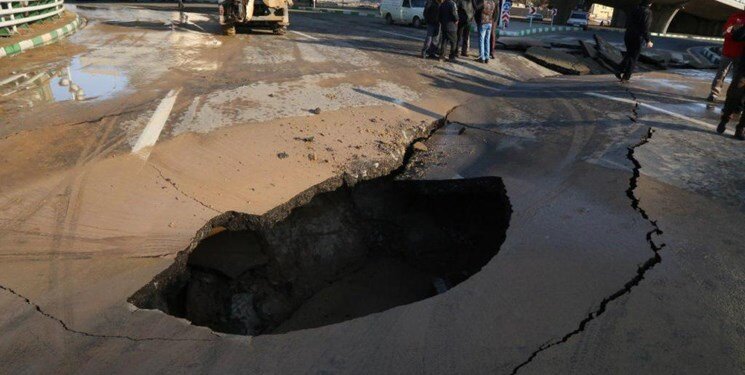‘Tehran experiencing subsidence rate of 5 mm a year’

TEHRAN – The capital city of Tehran sinks about 5 millimeters annually, Masoud Shafiei, an official with Tehran Urban Research and Planning Center told ISNA news agency on Tuesday.
Land subsidence, a gradual settling or sudden sinking of the Earth's surface due to subsurface movement of earth materials is mainly caused by aquifer-system compaction, drainage and decomposition of organic soils, underground mining, oil and gas extraction, hydro compaction, natural compaction, sinkholes, and thawing permafrost.
Land subsidence results in significant economic losses in the form of structural damage and high maintenance costs. This effects roads and transportation networks, hydraulic infrastructure, sewage systems, buildings and foundations. The total damage worldwide is estimated at billions of dollars annually.
Over the past three years, Azadegan Highway sank about 13 to 14 centimeters, which is highly dangerous, he lamented, adding, Tehran subsides annually at a rate of 5 mm.
Referring to the areas prone to land subsidence in the capital, he noted that southern part of the city is exposed to the threat including, Varamin as well as Shahriar.
“To take steps toward subsidence mitigation, we need to prepare plans on ground water extraction,” he concluded.
Ali Beitollahi, secretary of the national working group on natural disasters, warned in August that landslide and land subsidence are the two major threats in the Iranian capital city of Tehran, which will pose threat to the lives of at least 3 million people.
Southern Tehran sinks about 20 to 25 centimeters annually on a large scale, if it continues over a long period of time, the land downwards about 6 meters over a thirty-year period, leading to cracking of the buildings as well as gas, oil and sewer pipes, he explained.
Reza Karami, head of Tehran Disaster Mitigation and Management Organization, has said that planning and utilizing the capacity of all organizations can greatly reduce the risks and consequences of these hazards, but it should be noted that educating people and eliciting public participation is also an important factor that should not be overlooked.
FB/MG
Leave a Comment